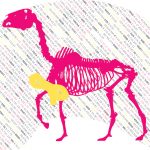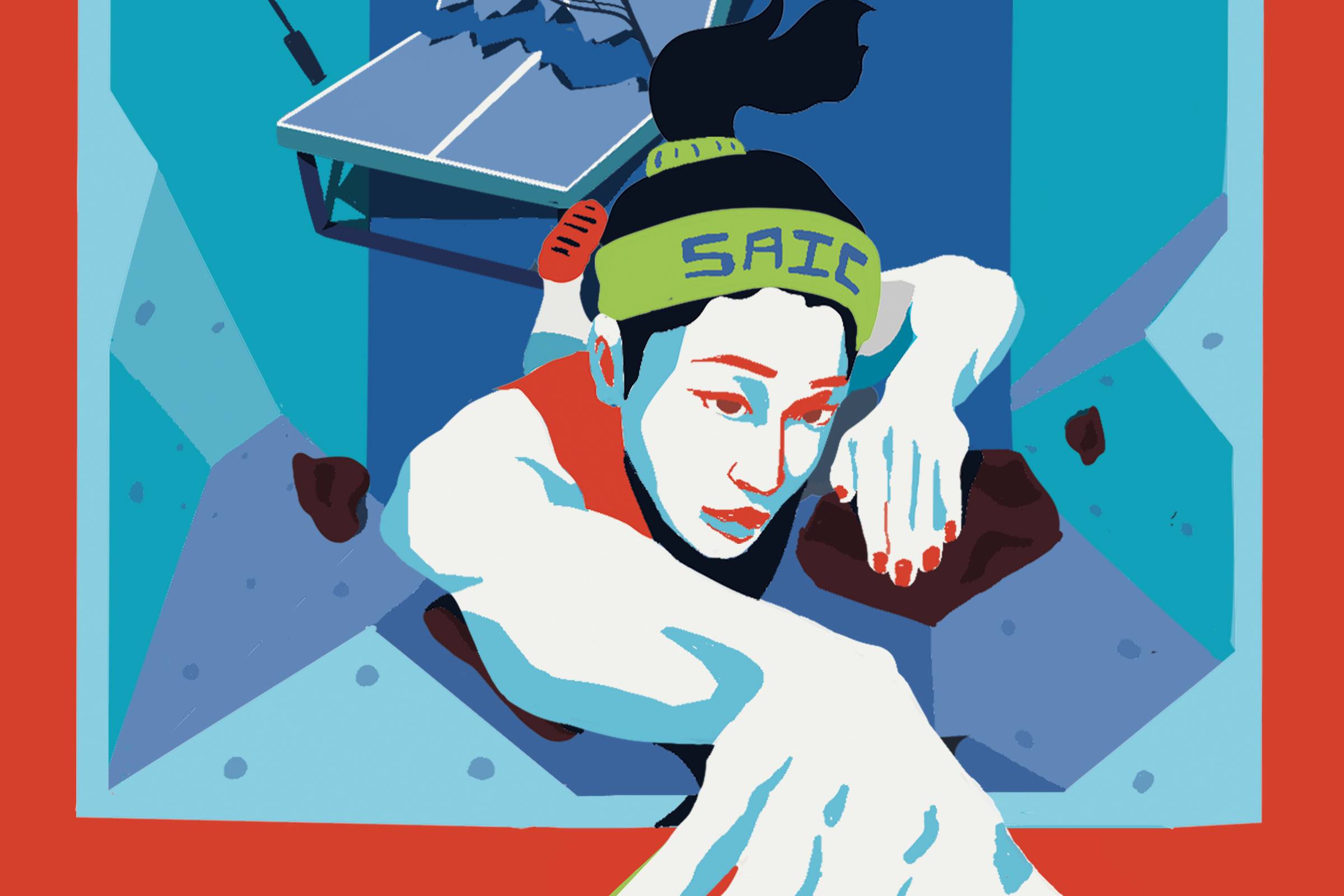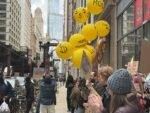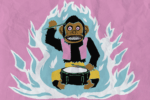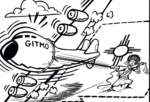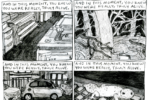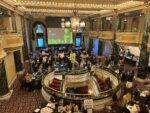
Choreographer Ingri Fiksdal’s “Diorama for Huk,” performed in Oslo in 2018. Photography by Simen Thornquist.
February in Chicago began with bitter cold and an aspirational, if unremarkable, collaboration at the Museum of Contemporary Art Chicago (MCA). Presented in part by the Fashion Resource Center and the Department of Fashion Design at the School of the Art Institute of Chicago (SAIC), Oslo-based choreographer Ingri Fiksdal and Danish director Jonas Corell Petersen’s “STATE” is the first part of two complementary works, the second of which is performed with SAIC dancers on-site at Anish Kapoor’s “Cloud Gate” (known colloquially as “The Bean”). The dance works feature wearable, sculptural textiles by Danish boutique streetwear and experimental costume designer Henrik Vibskov, whose work was on view in the companion exhibition “Henrik Vibskov : 0000 : State on State” at Sullivan Galleries. The evening-length piece is not a departure from Fiksdal’s ambitious body of work, which celebrates collaboration and high intensity space-making, as in the surreal “Cosmic Body,” which made its North American debut at the MCA in 2016. What “STATE” reveals about its own construction process, however, leaves little to the imagination and much to be desired.
Upon entering the MCA’s performance space, audience members are made aware that it is a place of ritual, activated by receiving small cups of blueberry juice dispensed by a woman clad in black. The piece takes place in the round, where a neat line of multicolored tiger-striped tutus stand stiffly in front of a long black table where the live industrial score composed by noise artist Lasse Marhaug is being performed against the rear wall. Throughout the night, “STATE” reveals some of its infrastructure but suspends a dependable amount of disbelief about the production. The woman in black speaks conversationally to the audience and walks among the dancers, spraying fog into them from a hand-held machine through the duration of the piece, and costume changes happen in full view of spectators.
What follows is a series of vignettes, borrowing apparently from the visual languages of “global” folk dances and inspired by Nordic mythology. The piece imagines ritual movements of the future, and asks what space — be it celebratory, anniversary, or intimate — discreet dances can carve out of our lives. But it is difficult, at times, to discern whether “STATE” refers to the peculiarity and uncertainty of dreams that a ritual alleges to provide or to the ways our bodies are policed by state surveillance.
The work opens with the ensemble slowly and deliberately bobbing and weaving in shapeless blue sheets that tie at the neck. The dancers break from the circle they formed at the start and emerge through a hole at the top of the sheets in succession. The sheets then turn inside out to become cape-like adornments, revealing a dizzying pattern as they are violently whipped side to side by the dancers like some winged creature throwing a tantrum. Soon the whipping migrates to the women dancers’ hair, which gives way to a perplexing motif wherein the short-haired men adorn crude halo-like crowns affixed with stringy fake hair and echo the same thrashing. The apparent soreness of the movers’ necks is distracting.
Each movement swells and shrinks in intensity, driven by the pounding vitality and intensity of the industrial score, diligently moving through costume pieces and incorporating them into the fabric of the choreography. The next movement employs the accordion-shaped tutus, which the dancers don along with nylon masks that make their nude bodysuits appear seamless, before returning to the center circle formation. The dancers reach through the space around the formation as if trying to make contact with every inch of the kinesphere before sweeping the round. They move through each other swiftly, but the larger choreographic vision is difficult to discern. The final and most severe movement of the work features only bright pink socks as additional costume pieces and stiff, meteoric motions in rapid succession. Wrists, forearms, necks, shoulders, and knees seem unmoored from each other, at the mercy of only the metronomic beats of the score. The stakes are high and palpable at this time. The dancers change positions swiftly and in extremely close configurations before migrating closer and melting into one another and the ground. The send-off of the work is, unfortunately, the uninspired, done-to-death image of the ensemble writhing around on top of each other on the floor, as if to imply some kind of godless creature, drifting en masse to the the rear corner of the stage.
“STATE” is collaboration in its most faithful sense. There is no one element that takes precedence over the other, and the movement seems to take cues from the garments and vice versa. However, although the moving pieces do occasionally coalesce, it would be a stretch to suggest that they elevate each other. The pieces don’t ever seem to totally connect, the intimacy between performers struggles to reach believability, and it’s unclear whether the first portion of the work is significantly longer to build momentum or to simply fulfill the time required to achieve evening length. By the midpoint break, when audience members received a second cup of murky fruit juice in lieu of an intermission, four people had exited the performance and one woman was visibly sleeping in the front row. “STATE” asks many questions about what role performance plays in our lives, but it provides few noteworthy ruminations.

